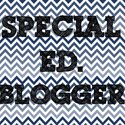Guided Reading and a freebie
November 25, 2014
What is Guided Reading?
According to Fountas and Pinnell, guided reading is an instructional setting that enables you (the teacher) to work with a small group of students to help them learn effective strategies for processing text with understanding. The purpose of guided reading is to meet the varying instructional needs of all the students in your class, enabling them to greatly expand their reading powers.
Keep in mind, guided reading is only one piece of a literacy program. Guided reading gives students the opportunity to read at their just right level, which means that the books provide them with a moderate challenge. They are grouped with students who are similar in ability, needs, and strengths. Instruction is then finely tuned to meet the needs of particular students.
I plan my guided reading books using students Instructional Reading level which is 96% to 98% accuracy. I have found anything lower than 96% is too hard and it takes a long tie to get students to move. I also want students to do 95% of the work. I strive for each student to make two years worth of growth each year. This really means looking at each students daily data from their guided reading session and making the most of the the next. Looking at what they need to better access the text the next day. Like thinking about how I structured my questions and how the student responded. I never afraid to change it up if they are not moving-then something needs to change. I always go back to their data.
Making the Most of Guided Reading
• Ensure that the heart of each guided reading is actual reading and practice. Commit at least 2/3 of total guided reading time to actual reading practice. Never do anything that isn't aimed directly at the goal of independent reading.
• Let students’ needs drive instruction. When your guided reading groups meet, keep students’ individual goals on the front burner. Don’t deviate, and give them time to mature the skill.
• Highlight the three top needs in your class, integrate and repeatedly focus on them throughout the day, no matter what you are teaching.
• When teaching independent reading strategies:
• model it; when the class reads together, ask “does that make sense?” and show them what to do when it doesn't; remind students to ask the same question when they read independently; explicitly describe to students the strategy you used.
• Dissolve and create new groups whenever students’ needs change.
Suggested Mini-Lessons
• Story Elements
• Vocabulary
• Sequencing
• Character Development
• Predicting
• Fluency
• Decoding Strategies
• Making Connections (personal, to another text, to the world)
• Inferring
• Summarizing
• Analyzing
• Critiquing
• Skimming and Scanning
• Retelling
• Word Meanings
Prompts to Support Learners with Strategies
To support the control of early reading behaviors
• Read it with your finger
• Do you think it look like __________?
• Did you have enough words?
• Did it match?
• Did you run out of words?
• Read that again and start the word
To support self-monitoring behavior
• Why did you stop?
• It could be __________, but look at ________.
• Where's the tricky work? (after error)
• Try that again.
• Were you right?
To support Cross-checking
• Check the picture.
• What could you try?
• Try that again and think what would make sense?
• Do you know a word that starts with those letters? Ends with those letters?
• Check it. Does it look right and sound right to you?
• What part do you know?
• What do you know that might help?
To support phrased, fluent reading
• Put your words together so it sounds like talking.
•To support searching for cues
MEANING
• Try that again.
• You said__________. Does that make sense?
• Look at the picture.
• What might happen nest, in the story?
• Did that make sense?
• What would make sense?
• Try __________, would that make sense?
STRUCTURE
• Does it look right?
• Can you say it that way?
• What would sound right?
• Try __________. Would that sound right?
VISUAL
• Does it look right?
• What do you expect to see at the beginning? at the end?
• Do you know a work like that?
• What does it start with? Can you say more than that?
• What do you know that might help?
To Support Self-Correction
• You're nearly right. Try that again.
• I liked the way you worked that out.
• You made a mistake. Can you find it?
• Something wasn't quite right.
This guided reading checklist focuses on the many skills taught during guided reading. When a child isn't reading fluently, it is usually because one or several of the following reading skills require more support. This is a helpful resource that I use when planning for the next day. Make sure to grab your below.
Labels:freebie,Guided Reading
Subscribe to:
Post Comments
(Atom)

About Me
Welcome to my all thing special education blog. I empower busy elementary special education teachers to use best practice strategies to achieve a data and evidence driven classroom community by sharing easy to use, engaging, unique approaches to small group reading and math. Thanks for Hopping By.
Resource Library
Thank you! You have successfully subscribed to our newsletter.
Search This Blog
Labels
21st Century
Autism
Bloom's Taxonomy
DIBELS
ELL strategies
Formative Assessment
Fountas and Pinnell
Guided Reading
IEP
Just Words
Progress monitoring
RTI
Reading Comprehension
Wilson Reading System
apps
back to school
beginning readers
best practices
books to read
classroom
common core
comprehension
data
differentiation
fluency
freebie
intervention
lesson plan
math
parents
phonics
reading
small group
special education
teaching
technology
vocabulary
writing












0 comments:
Post a Comment